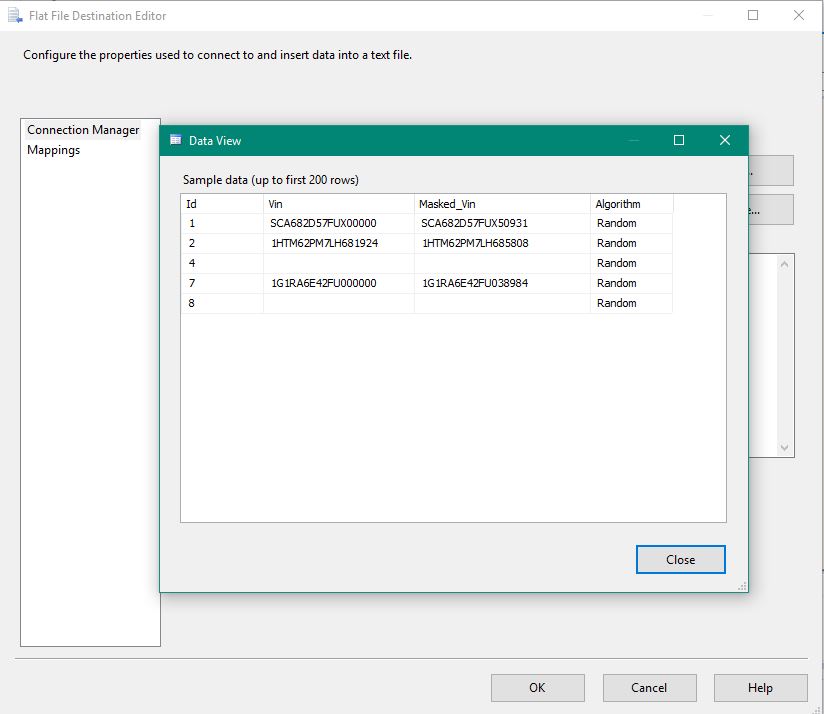e
q
u
e
s
t
a
d
e
m
o
Data Masking Components: VIN Dynamic
{TOC}
"VIN Dynamic"
API Reference, CLR Reference (links)
Usage Instructions:
Purpose
The purpose of the component is to mask such values as Account or Patient Numbers that often consist of the combination of Alpha and Numeric characters and are not formed by a specific rule.
Algorithm
Description
 The Masking VIN data masking component creates a Vehicle identification number (VIN).
The Masking VIN data masking component creates a Vehicle identification number (VIN).
|
Usage Instructions:
| 1. Configure a source that contains the column with Vehicle identification value (we assume character data type). The data in the column may also include any characters that will be treated as a separator, such as spaces, dashes and slashes. |

|
| 2. Drag and Drop VIN Dynamic masking component, connect the source and the VIN Dynamic data masking component with the source's precedence constraint: |

|
| 3. Now, the precedence constraint (the blue arrow) passes proper meta-data to the VIN Dynamic component. If you click on constraint, you will see: |

|
| 4. Now that the metadata for the VIN Dynamic exists, and values are passed into the data masking component, please open the component editor: |

|
| 5. In the second tab, there are input columns. Please check-mark only one column, the one that you will be masking with VIN Dynamic algorithm: |

|
| 6. This will create an extra column with the prefix “Masked_”. |

|
| 7. Create a connection manager for the destination and configure source component for the destination. In the connection manager, in the tab “Mappings”, specify that you want newly created Field_Masked to be a field replacing the original value. For that, just click on the available input columns, choose the masked value, and map to the “Available Destination Columns” |

|
| 8. Now, all the configurations are complete for the valid values. You can run the package with the VIN Dynamic Data Masking component, and see the results of data masking: |

|
Error Handling
| 9. If, however, there are invalid values in the package's source, one would need to configure error handling. Invalid values are those that are not conforming to the rules of the entity. To handle invalid values, each data masking component has error handling precedence constraint. One needs to create error destination connection and connect red arrow (error handling constraint) with this destination. As the connection is made, one needs to configure the state of failure: “Fail”,”Ignore” or “Redirect”. |

|
| 10. It is recommended that one re-directs the output into the error destination, so that later one be able to analyze and process data for quality purposes. The VIN Dynamic data masking components errors are the only ones not recommended for further processing as it is truly hard to break their format. |

|
| 11. It is our suggestion that with VIN Dynamic data masking component one should not process erroneous data without further analysis at all. |
